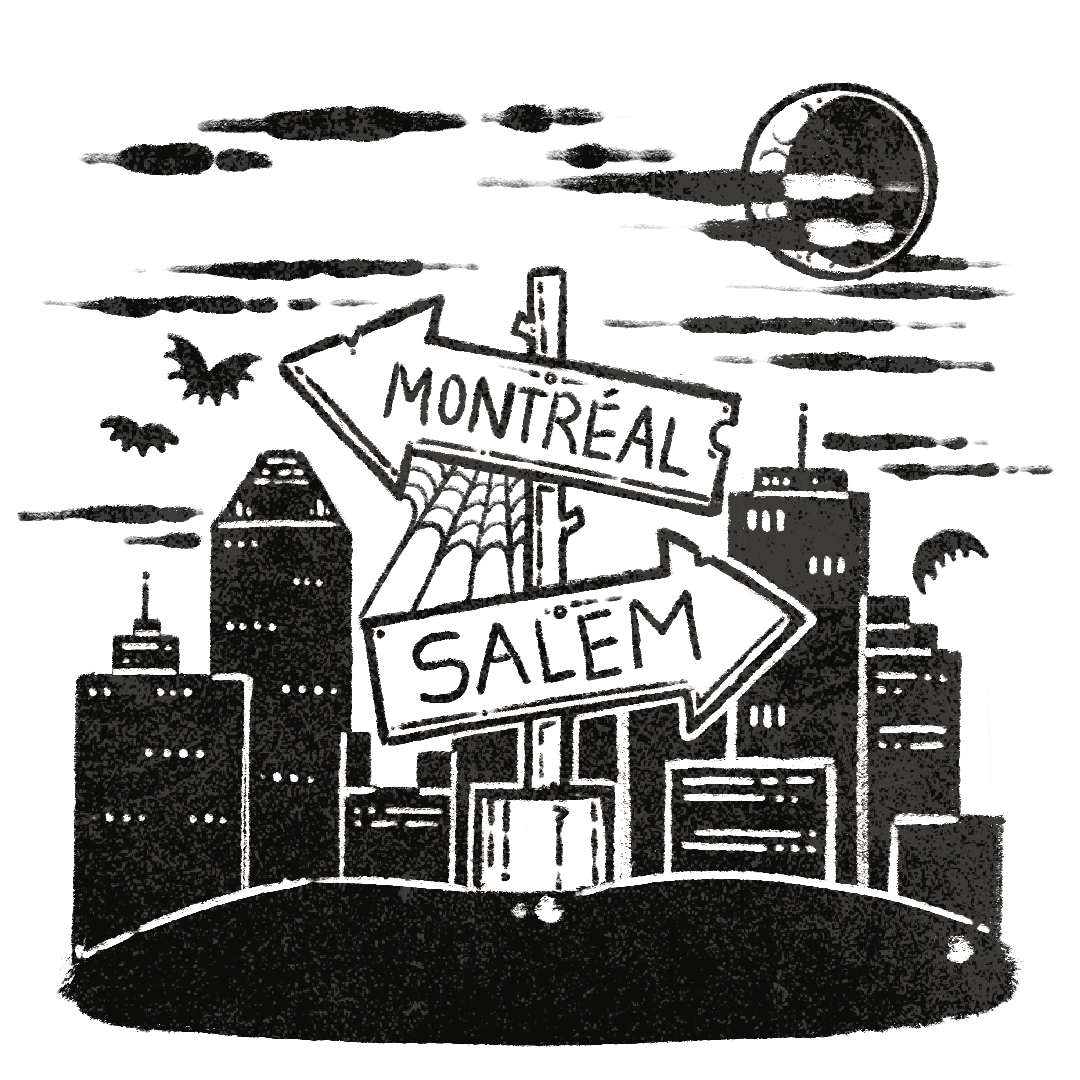Montréal might not be Salem…but we’ve got spooky history too!
If you’re from North America, you probably associate Halloween with Salem, Massachusetts, right? That checks out—the Salem Witch Trials are something we learn about in high school. Personally, I knew of the trials long before we began studying The Crucible in twelfth grade.
Growing up, my mum told me about all the ghoulish things she had experienced over the years—seeing ghosts, spirits, and visiting Salem in 1997. She told me about a re-enactment of a witch trial: “Actors would shout, ‘Hang the witches!’ and children would cry because it would be one of their moms. Then if it was a girl born into that family she would automatically be assumed to be a witch as well.” Is that not the coolest?
Salem, established 1626, had experienced two decades of eerie events before Montréal was established in 1642. The settlers of New France and New England were new to the land, new to the power that comes with imposing their beliefs, and new to the resulting threats—all of which naturally aroused a suspicious and ominous atmosphere. Rumours and paranoia contributed to the beginnings of the Salem Witch Trials in the spring of 1692. From today’s perspective, the backwards legacy of the trials makes for great Halloween lore and makes Salem, as my mum can attest, an enthralling tourist attraction.
So, did Montréal have witches? Honestly, who knows—and if we did, their fate would not have been similar to that of those in New England. At most, they’d have been banished. The closest we got were a few trials, notably that of Anne Lamarque who allegedly owned a book of magic and spells, but due to popular indifference, wasn’t convicted.
The story surrounding Barbe Hallé is also popular, and one that Concordia history majors may have learned about in their lectures. While Hallé was not tried for being a witch, she did experience some pretty freaky stuff, such as demonic visions and paranoia, which led her to move to l’Hôtel-Dieu de Québec, run under a French canoness named Catherine de Saint-Augustin. Under the care of religious figures, many episodes and supposedly an exorcism later, Hallé eventually returned to normal, and that was the end of that. So I guess you could say that Montréal, and New France overall, did not succumb to the witch paranoia that New England did. We had our own problems.
I think we’ve all taken a nightly stroll around old Montréal, especially Rue Saint Paul, the oldest street in the city. It’s said that many apparitions come to life on Rue Saint Paul, notably the ghost of an enslaved woman, Marie-Joseph Angélique, who was accused of arson with the burning of 45 houses and a hospital along Rue Saint Paul, tortured and hanged in 1734. Many say that her ghostly figure roams the street, seeking revenge for her execution.
If you’ve braved the set of stairs up and over the old Champ de Mars military parade ground to get to Old Montréal, you’ve definitely walked through Place Vauquelin. Trapped beneath that beauty, is something a bit darker: the first Montréal Prison, which housed some pretty atrocious prisoners who were publicly executed. Now, all that remains are old cells beneath the square. City workers avoid the old dungeon because of a sense of claustrophobia, fear, and dread. Cold spots, muffled sounds, and disembodied voices are reported frequently. Though it is hard to identify who may be haunting the ruins, the cold spots could be the pleads of John Collins, a drifter who froze to death in 1835. Disembodied voices could be remnants of Adolphus Dewey’s prayers: Dewey murdered his wife by slashing her wrists and throat with a razor, while his own death was prolonged because his neck didn’t snap when he was hanged.
I could not do this article justice without mentioning our mountain overlooking Montréal: the enchanting Mont Royal which is home to two cemeteries, Mount Royal and Notre-Dame-des-Neiges. One thing is certain, nothing is more haunting than a cemetery. In terms of the former, it has been reported that just after sunset, shadowy figures begin roaming the graveyard and lingering on its bluffs. Strange noises and paranormal activity are frequent, and ghostly images are often captured by ghost hunters. Our “main character” ghost? Supposedly an Algonquin warrior who frequently looks, with sorrowful and vengeful eyes, out over the cliffs to the city below.
It’s interesting how places that are considered touristy and beautiful may have such a dark history. And I sincerely hope that you, the reader, learned an eerie thing or two from this piece. Maybe you’ll think of what’s really beneath Place Vauquelin the next time you hike up those steps.
